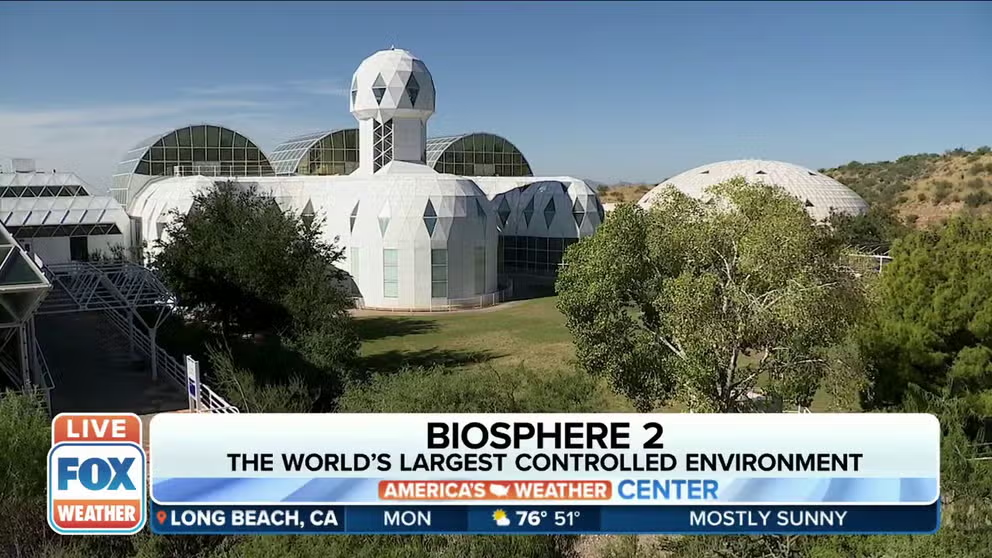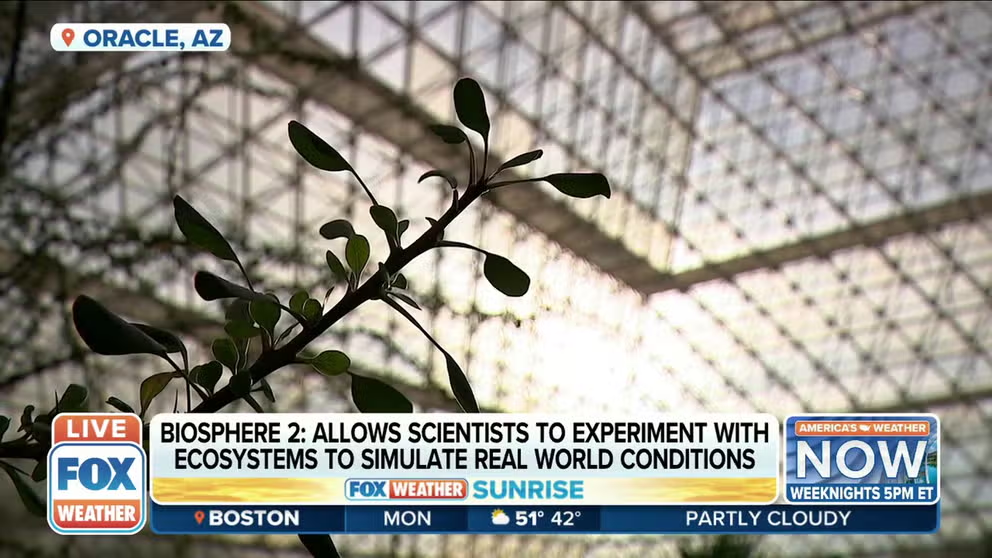Biosphere 2, once used to prepare us for other planets, now researches the future of our own
Scientists are using the 3.14-acre facility that contains 5 different ecosystems to study how climate change is affecting Earth
Largest closed ecological system focuses on solving climate change problems
Biosphere 2, the world’s largest controlled environment, looks to solve problems presented by climate change. Director Joaquin Ruiz tells FOX Weather’s Max Gorden just how groundbreaking his station is.
ORACLE, Ariz. – Rising out of the Sonoran Desert is a metal and glass structure that looks more like something out of science fiction. In reality, it has been home to one of the largest science experiments on Earth.
Biosphere 2 is a 3.14-acre facility that contains five ecosystems. It was built in the late 80’s as a way to prepare humans to live in enclosed, controlled environments on other planets. The name comes from the idea that Earth is the first biosphere.
In the early 90’s two groups of people, called Biospherians, were sealed inside the complex. The first group lived there for two years and the second group for six months.
HOW TO WATCH FOX WEATHER ON YOUR TV
John Adams, deputy director of the facility, said the project had two goals.
"One, trying to better understand Earth systems, but also by a better understanding of Earth systems, could we use that understanding to take those technologies into space to leverage them when we’re colonizing the moon or Mars?" Adams said.
Nowadays, the facility is the property of the University of Arizona and is home to research aimed at understanding how climate change is affecting our planet.
Largest indoor research ocean
Among the biomes that are inside the facility is a 700,000-gallon artificial ocean. Diane Thompson, the director of marine research at Biosphere 2, said it’s the largest enclosed ocean dedicated to marine research in the world.
"We can control the temperature of this system very, very, very precisely, and that actually allows us to do these really key climate change experiments," Thompson said. "So what is going to happen to us, not just today, not just tomorrow, but 10, 20 years in the future."
US COASTS COULD SEE CENTURY’S-WORTH OF SEA-LEVEL RISE IN 30 YEARS, NOAA REPORT SAYS
One of those experiments is testing how coral reefs respond to warming oceans. Specifically, researchers are trying to find ways to engineer these reefs, which provide habitat for ocean creatures and protection to coastlines, to be more resilient to changing temperatures.
"We've lost about 50 percent of the world's reefs, and we're really at risk of losing them entirely if we continue to do nothing," Thompson said.
Rainforest research
Researchers are also studying how climate change is affecting another critical part of our environment – tropical rainforests.
"It's the hottest rainforest in the world because it's in the middle of the Arizona desert, and that is actually scientifically very interesting if we're worried about climate change, because what we have here now is today's rainforest in tomorrow's climate," said Scott Saleska , a professor of evolutionary biology at the University of Arizona.
2021 WAS WORLD’S 6TH-WARMEST YEAR ON RECORD
According to researchers, the temperature of the rainforest at Biosphere 2 is similar to what scientists believe the temperature of rainforests will be in 2100. They’ve found that the overheated rainforest is losing some of its biodiversity, but at the same time, some plants appear to be thriving.
"The warning is tropical forests are vulnerable," Saleska said. "The hope is that there are still mechanisms of change so that they can adapt to some extent, as long as we don't push them too hard, we don't push them all the way over the edge."
Biosphere 2 being used to find solutions to combat climate change
Biosphere 2 is a massive scientific facility meant to simulate Earth’s ecosystems. Originally created to see if people could survive for long periods of time on other planets, it’s now being used to find solutions to combat climate change.
Experimenting at scale
The other ecosystems being studied at Biosphere 2 are a savannah, a desert and a wetland. It allows scientists to experiment in biomes big enough to simulate real-world conditions, but small enough to be self-contained.
"Nobody has an experimental station that deals with environmental issues of this scale that can be either controlled or measured the way that ours is," said Joaquin Ruiz, director of Biosphere 2.
Biosphere 2 is open to the public. For more information about the facility and how to tour it, go to biosphere2.org.

